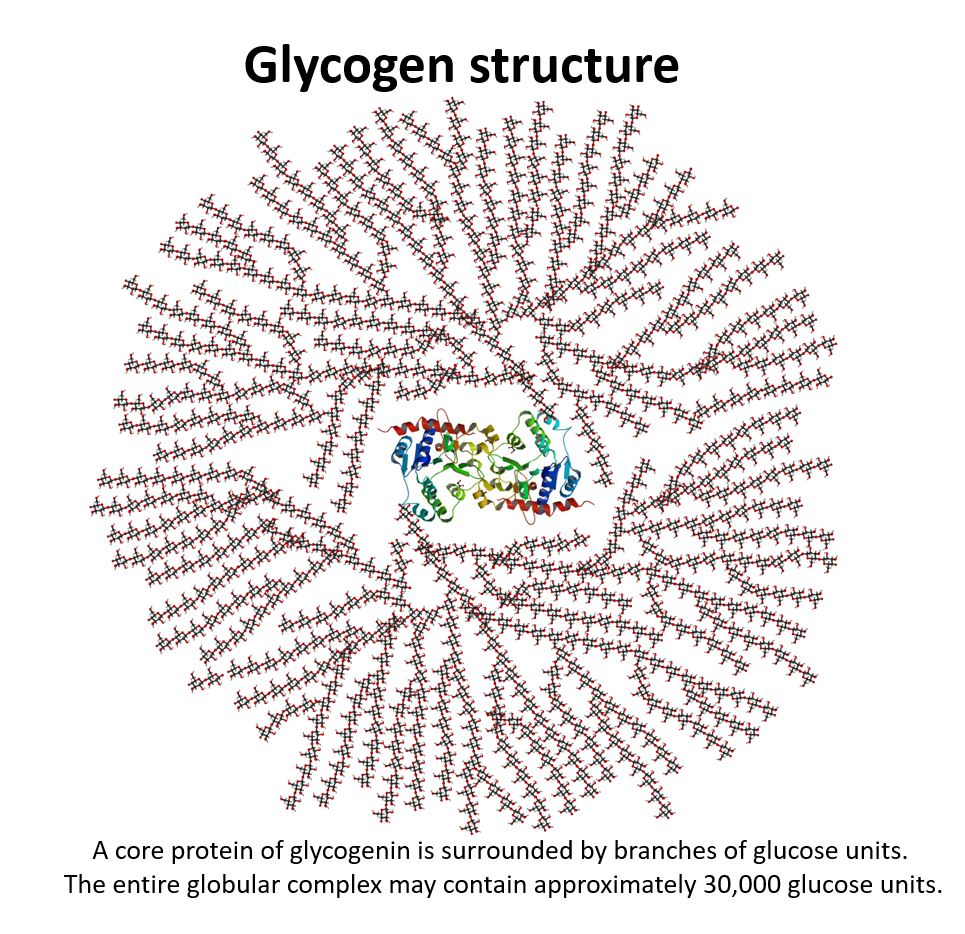Playlist
Show Playlist
Hide Playlist
Glycogen Metabolism: Introduction
-
06 Advanced CarbohydrateMetabolism3.pdf
-
Reference List Biochemistry.pdf
-
Download Lecture Overview
00:00 Any consideration of sugar metabolism must include discussion of the ways in which sugar is stored and released in the body. 00:08 In animals this is glycogen and will be the subject of this talk. 00:12 In the first part of the talk what I will do is go through a bit of the structural and enzymatic considerations in the breaking and making of glycogen. 00:20 And in the last part of the talk, I will discuss glycogen from a regulatory point and how that regulation helps the animal to meet its needs. 00:28 Now glycogen is a polymer of glucose, as I have noted in another one of the presentations. 00:32 It is actually a very large polymer glucose that you can see on the screen on the right. 00:36 Glycogen is stored in animals in liver and muscles. 00:39 In liver it is used to provide a constant supply of glucose into the blood stream as the animal needs it. 00:47 And in muscles, it’s an immediate source of glucose for the contracting actions that muscles have to take. 00:53 Now glycogen is similar to amylopectin of plants and differs only in the amount of branching that the molecule has. 01:01 Glycogen has branches about every 10 glucose residues. Whereas amylopectin has branches about every 50 or so. 01:08 Glycogen helps to modulate blood glucose and it is; because it is that battery or that storage form of glucose, the liver can top up as necessary to release blood glucose into blood and allow that blood glucose level to stay as needed. 01:23 Now glycogen in its synthesis does not start with the glucose, it actually starts with a protein called glycogenin, and to that protein is attached the first glucose molecule. 01:35 And the attachment of that first glucose molecule leads to the structure that you see here. 01:39 As you can see that this structure can be quite complex with up to 20,000 glucose units within a given glycogen entity. 01:47 Now this differs a bit from the plant storage glucose forms which will have only order about 400 or so.
About the Lecture
The lecture Glycogen Metabolism: Introduction by Kevin Ahern, PhD is from the course Carbohydrate Metabolism.
Included Quiz Questions
Which of the following is true of glycogen?
- It is a storage form for glucose in animals.
- It is similar to cellulose in structure.
- It has only alpha 1,4 bonds.
- It helps plants to reduce glucose concentration.
- It has branches about every fifty glucose molecules.
Customer reviews
5,0 of 5 stars
| 5 Stars |
|
5 |
| 4 Stars |
|
0 |
| 3 Stars |
|
0 |
| 2 Stars |
|
0 |
| 1 Star |
|
0 |




